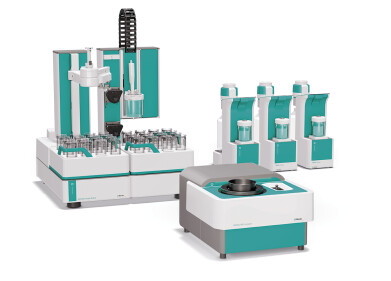Mass Spectrometry & Spectroscopy
4 Illnesses Caused by Bacteria in Food
May 16 2022
Bacteria is one of the most common causes of foodborne illness. While cases are lower in developed countries with access to clean water and good sanitation systems, bacteria in food is a global health risk and claims more than 400,000 lives every year, according to the World Health Organisation. Read on to find out more about some of the most common illnesses caused by bacteria in food and symptoms to watch out for.
Staphylococcal food poisoning
Also known as Staph, this gastrointestinal illness is contracted by eating contaminated food. The illness is caused by toxins produced by a bacteria called Staphylococcus aureus, which lives on the skin of roughly 25% of humans and animals. While Staph bacteria doesn’t usually cause illness, when transferred to food it can start to multiply and produce toxins. These toxins result in symptoms such as diarrhea, nausea, stomach cramps and vomiting. The onset is fast, with some people experiencing symptoms just 30 minutes after eating contaminated food.
Salmonellosis
American scientist Dr. Daniel E. Salmon first discovered Salmonella bacteria in the late 1800s. There are several different types of Salmonella, with most causing an illness called salmonellosis. Other stains can result in typhoid fever or paratyphoid fever, though these are less common. Stomach cramps, fever and diarrhoea and all associated with Salmonellosis, with symptoms usually developing within six hours to several days after consumption. That said, in some cases symptoms don’t appear for several weeks as it takes longer for Salmonella bacteria to multiply in the body.
Campylobacter infection
Diarrhea, stomach cramps and fever are some of the most common symptoms of a Campylobacter infection. Vomiting and nausea are also symptoms and usually appear between two and five days after consuming Campylobacter bacteria. While cases are usually mild, some can cause complications such as arthritis, irritable bowel syndrome and temporary paralysis. The risks are higher for people with compromised immune systems, for example patients with AIDS, blood disorders or receiving chemotherapy treatments. In these types of high-risk patients, the infection can infiltrate the bloodstream and cause life-threatening symptoms.
C. perfringens infection
While most cases of C. perfringens infection go undiagnosed, the Centres for Disease Control and Prevention (CDC) estimates the illness affects almost one million people a year in the United States. The infection is caused by Clostridium perfringens bacteria, which live in the intestines of animals and thrive on raw meat. Once ingested, the bacteria can produce a toxin that causes diarrhea. Symptoms can appear as soon as six hours after consuming the bacteria. Interestingly, cases are significantly higher during celebrations such as Christmas and Thanksgiving, when the consumption of meats such as turkey and chicken spike.
While bacteria in food can cause serious illness, it’s not all bad. Probiotics, also known as “good” bacteria offer a laundry list of health benefits. Find out more about probiotic-rich foods such as yogurt, kimchi and kombucha in ‘Bacteria in Food - Types, Testing & Problems’.
Digital Edition
Lab Asia 31.2 April 2024
April 2024
In This Edition Chromatography Articles - Approaches to troubleshooting an SPE method for the analysis of oligonucleotides (pt i) - High-precision liquid flow processes demand full fluidic c...
View all digital editions
Events
Apr 22 2024 Marrakech, Morroco
Making Pharmaceuticals Exhibition & Conference
Apr 23 2024 Coventry, UK
Apr 23 2024 Kintex, South Korea
Apr 23 2024 Seoul, South Korea
Apr 24 2024 Jakarta, Indonesia








.jpg)









